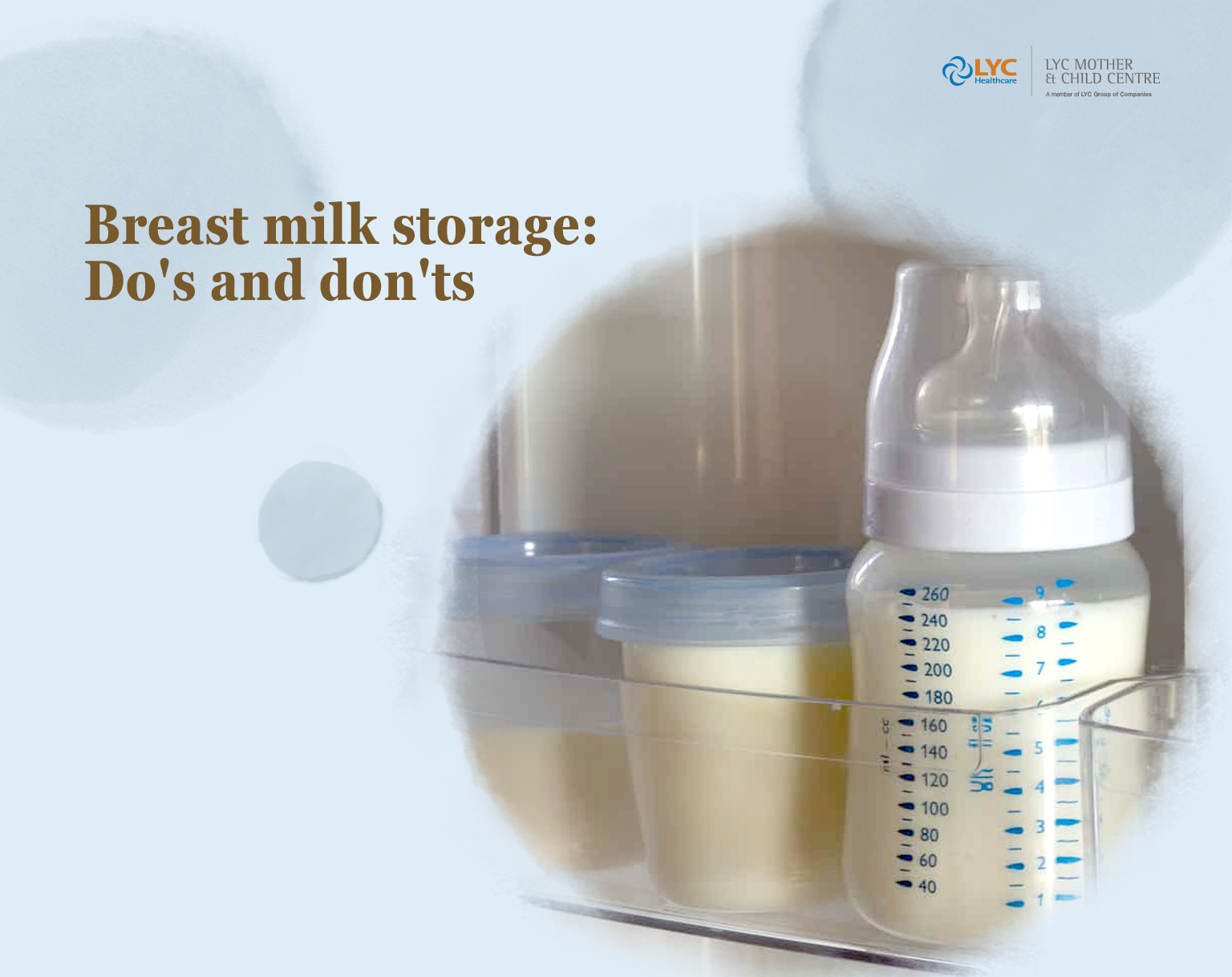
As a breastfeeding mother who has to return to work after confinement, you would often use breast pumps to express breast milk, so it's important to know how to safely store your expressed milk. Here are some do’s and don'ts about breast milk storage:
First, wash your hands with soap and water before expressing or handling breast milk, then store expressed breast milk in a clean, capped food-grade glass container, chemical-free (BPA Free) hard plastic container, or plastic bags specially designed for collecting and storing breast milk, but do not store breast milk in single-use plastic bags designed for general household use.
Next, label the container with the date the breast milk was expressed and your baby's name. Put the container in the back of the refrigerator or freezer, where the temperature is the coolest. If you don't have a refrigerator or freezer, temporarily store breast milk in an insulated freezer with ice packs.
Fill the container with the amount of milk your baby needs for each feeding, starting with 2 to 4 ounces (60 to 120 ml) and adjusting as needed. You may also consider saving smaller servings—1 to 2 ounces (30 to 60 milliliters) for emergencies. Breast milk expands when it freezes, so don't overfill the container.
When adding freshly expressed breast milk to refrigerated or frozen breast milk, first cool it thoroughly in the refrigerator or in a cooler with ice packs. Do not add warm breast milk to frozen breast milk, as this will cause the frozen breast milk to partially thaw.
How long you can keep expressed breast milk depends on the storage method. In general, freshly expressed breast milk can be kept at room temperature for up to 6 hours, but it is best to drink it or properly store it within 4 hours. Freshly expressed breast milk can be stored in an insulated freezer with ice packs for up to a day.
Proper storage of breast milk ensures that your baby gets the best nutrition and avoids wastage. Here's what to do and what to avoid when storing breast milk to ensure your breast milk remains fresh and safe to be consumed: